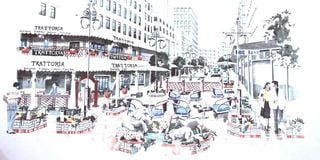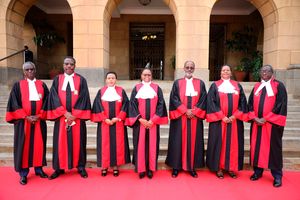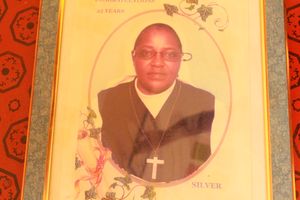Premium
Plans for remaking the green city in the sun

How a pedestrianised Kaunda Street could look like.
In last week’s Going Places I was at the temporary home of the GoDown Arts Centre in Kilimani and talking with the Centre’s Executive Director Joy Mboya. She is determined that the new GoDown, which is going to be built in its old place of Dunga Road, will be open and welcoming to a wide public; she also believes that Nairobi – all of Kenya’s cities – should have open and welcoming public places where people can breathe fresh air, relax and meet. ‘It’s important that we make public spaces that work for all of us,’ she said.
It made me think. Nairobi wasn’t designed for the benefit of all its peoples. It was a colonial city. Like most of the cities across sub-Saharan Africa that I have visited, there is no city square. None of them have a public meeting place such as Trafalgar Square in London, Piazza Navona in Rome, La Grande Place in Brussels, Plaza Mayor in Madrid or Red Square in Moscow. Clearly, the designers of these colonial cities of Africa didn’t want public places where the majority peoples could meet.
Only In South Africa and Zimbabwe do you find city squares. In Pretoria, there is Church Square with a statue of Paul Kruger, the Boer leader and previous president of South Africa. When I first visited it, I wondered what Kruger’s ghost would have thought about the many young Africans relaxing on the grass surrounding his statue. Harare has the Africa Unity Square that, in the days when the country was called Southern Rhodesia, was known as Cecil Square, after its founder Cecil Rhodes.
Presumably, the colonial city planners in South Africa and Southern Rhodesia were designing under the mistaken belief that the white domination could be sustained.
As it grew up, Nairobi took on the shape of a clover, with the European residences in the west leaf of the town, Indian ones to the north and African ones to the south and east. When I first came to Kenya in 1967, Nairobi’s centre still had a European feel about it. The meeting places were hotels such as the Stanley and the Norfolk and clubs such as the Muthaiga Club and the Nairobi Club – the former, in colonial times, frequented by settlers and the latter patronised by civil service officials.
When I was teaching at Nairobi University, the Delamere Terrace of the Norfolk Hotel was a popular meeting place. So was the Thorn Tree Café at the Stanley. Sadly, because of security concerns, both hotels have put up their shutters and shielded themselves from the city.
I rarely go to the city centre these days, but early last Thursday I went to get the feel of it again. It was all noise and movement – movement of people as well as cars. I retreated to have breakfast in the Trattoria – a restaurant that has stayed on while others, like the Tamarind or Alan Bobbe’s Bistro, moved out to the suburbs.
I was lucky to find the owner, Gaetano Ruffo. We had an extended chat over coffee. When I told him what I was up to – preparing for this article – his eyes lit up. ‘I want to show you something,’ he said. ‘Have another cup of coffee.’
He produced a proposal for making Kaunda Street a pedestrian area that he had first submitted to the city authorities back in 2011. It is a scheme that could be extended to other parts of the CBD. The architects’ drawings reminded me of happy times relaxing in the street cafes of Paris when I was a youngster. We certainly have the climate for it. I think Gaetano should submit his proposal again. He might well get a more sympathetic response this time.
John Fox is Chairman of iDC Email: [email protected]





